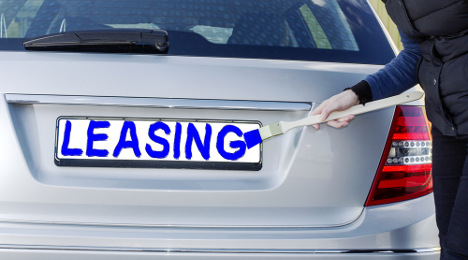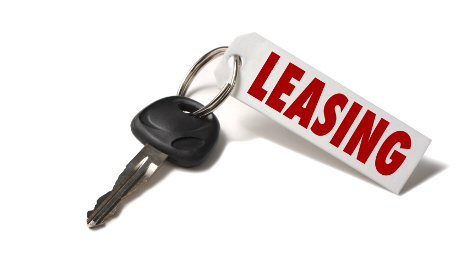Auto Remarketing has launched a new series this year called “Consignor Connection,” in which we catch up with a leading remarketing executive at a different consignor each month.
In a Q&A format, we talk about best practices, auction industry trends and more. The latest in this series features Levi McCoy, who is the director of remarketing at LeasePlan USA:
Auto Remarketing: How does LeasePlan strike a balance when it comes to choosing how your cars are sold, be it auction sales, online sales, open/closed sales, etc.?
Levi McCoy: LeasePlan is open-minded and progressive in our remarketing strategy. By that I mean, if opportunities present themselves in ways we haven’t viewed before we will take a close look.
We remain loyal to our core buyers who buy in the "live" auction lanes. Many, many buyers continue to like to touch and feel vehicles they intend to purchase.
With that being the case, we all know online sales are expanding rapidly. LeasePlan wants a presence there, as well. As more buyers utilize and become more comfortable with online sales, we want to be there for them, too! We continue to experience year-over-year growth in the percentage of our vehicles sold online.
AR: Looking at multiplatform buying and selling in the wholesale space, what are some of the benefits you see as a consignor, and what are the challenges?
LM: The immediate and most recognizable benefit to a multiplatform solution is more potential buyers bidding on your inventory from not just North America, but other international locations. Multiplatform is an ongoing natural growth opportunity with the accuracy and speed of evolving Web-based technologies.
Multiplatform is forward thinking with “built-in” efficiencies — i.e., more eyes on vehicles and cost savings. I would like to see it move more and more into the mainstream. As far as challenges with multiplatform, those have lessened over the years. The technology is in place to support it. Challenges may boil down to confidence and the elusive time it takes to "fully" implement.
AR: What have been some of the biggest challenges (and opportunities) in the fleet/lease segment of the auction market for consignors in 2015?
LM: It’s still early, but the normal opportunities that come with first quarter volumes come to mind. Our clients mostly control when they decide to de-fleet, so business needs of our clients play a major role in this opportunity.
LeasePlan is here to serve our many client needs, and their needs do vary. Accurate floor pricing is an opportunity we consistently try to manage, and the availability of timely sales data has dramatically improved vehicle valuation tools to support pricing. We try to look at challenges as opportunities, so there aren’t many challenges that aren’t viewed as opportunities.
AR: What are some ways that OEMs, consignors, dealers and auctions can work together to keep residuals strong?
LM: I think the big picture is everyone looking out for the best interest of the overall industry. In the highly competitive industry we all enjoy, that can be challenging or an opportunity.
Also having good product to offer and support of those products. Maintaining and ultimately enhancing the trust in the industry is paramount to all. Everyone likes doing business with those they like and trust.
The roller-coaster that is lease credit approvals watched by Swapalease.com swung significantly again in April, rising to the highest point in six months.
Site officials reported April’s metrics continued more volatility after they saw the approvals rate during the month come in at 78.6 percent. That level represented a 31.0-percent jump from the approvals rate during March, which was 60.0 percent.
Helping to move the reading higher was that the majority of lease approvals during April came from foreign brands such as BMW, Mercedes-Benz and Lexus.
Swapalease.com mentioned the 78.6 percent approvals mark is the highest monthly acceptance rate dating back to last year when 84.2 percent of lease transfer applicants were approved in November.
The lease approvals volatility has remained entering 2015, as January numbers were above the healthy mark at 75.0 percent but February and March both saw low numbers.
Analysts explained that one reason surfacing for this volatility is the type of vehicle lease being transferred. During April, the vast majority of lease declines came from domestic brands.
Interestingly enough, the site noted the first four months of 2015 have displayed significantly more lease approval volatility compared with the first four months of 2014, which saw the approvals rate stay within the 67 percent to 70 percent range in each of the first four months.
Swapalease said this year’s volatility comes amid continued growth in sales and the lease market, with end-of-month light-vehicle sales showing year-over-year growth of 4.6 percent.
“We expect to see continued turbulence in lease approvals, especially as the volume for lease applicants grows to include sub-prime shoppers turned away at the dealership,” Swapalease.com executive vice president Scot Hall said. “We’re keeping a watchful eye on domestic versus foreign lease applicants, as this is a new trend emerging in our marketplace.”
The first three months of 2015 represented the best quarter ever for certified pre-owned sales, according to Autodata Corp., which said dealers moved 614,450 CPO vehicles in Q1.
Not only did that follow the fourth straight year of record CPO sales, it also followed a fourth quarter in which leasing’s penetration of all new vehicles financed reached nearly 30 percent, according to Experian Automotive. Not to mention fourth-quarter leasing volume was up 3.6 percent year-over-year, Experian said.
And since we’re now a few years into the lease market’s resurgence, lease maturities are expected to rise from 2.2 million in 2014 to 2.3 million this year and escalating to 3.1 million in 2016, according to data shared by J.D. Power at the NADA/J.D. Power Automotive Forum in New York in late March.
Clearly, these three trends go hand-in-hand: ramped-up leasing fuels off-lease volumes, which can give dealers an ample crop of vehicles ideal for certification and thus meet this burgeoning consumer demand.
Amid all of the growth in these three metrics, Auto Remarketing spoke in early 2015 with Paula Tompkins, the chief executive officer of ChannelNet, whose company provides digital customer acquisition, retention and conquest services.
Part of that includes helping manage the lease turn-in process, lease pull-aheads and CPO lead-generation.
We talked to Tompkins about some of the trends in these areas, and she provided a walk-through of where ChannelNet helps out.
Lease Ending? ‘Gathering Intent is Critically Important’
Starting with leasing, Tompkins said that since the recession, this segment has been “full steam ahead.”
“A lot of these vehicles that are being turned in by consumers are in pretty darn good shape. If they’re fleet vehicles or especially in the higher, more luxury segment, you can get some pretty fantastic vehicles,” she said.
When it comes to preparing the lessee for the end of that lease, here’s how ChannelNet goes about making sure that process runs as smoothly as possible:
Depending on the wishes of the client (which is typically the captive lender or financial institution writing the lease), ChannelNet typically begins communicating with the lessees through text or email somewhere between 180 and 210 days before the lease ends. The email links the customer to an informational personal microsite.
“We start to prepare them, psychologically, for the fact that in a fixed amount of time, they’re going to have to make some decisions about their vehicle,” Tompkins said.
The company begins a digital dialogue to get the lessee thinking about the end of that lease and preparing for what he or she wants to do next. In other words, getting the lessee to begin exploring the options of doing another lease, buying the car or buying a new car. The company may share online the dealer’s inventory with the customer, as well.
Additionally, the ChannelNet solution encourages the lessee to check out any dings and dents on their current ride so that they can get them fixed ahead of time.
When it’s 120 days away from the lease ending, ChannelNet will send another round of information to that customer digitally. Then 90 days out, the company begins to specifically ask the lessee what his or her intent is.
Tompkins says it is “critically important for the dealer, for the OEM and for the finance company” to begin thinking about what the customer says he or she is planning to do with the vehicle as early in the end-of-term process as possible.
“That allows dealers to start planning what’s going to happen as the customer moves through the process. Gathering intent from the customer is critically important,” Tompkins said.
And that process with ChannelNet is done digitally through text or email, and the data reveals it is quite effective, she said
“This is a new way to go about getting intent and it has proven to be extremely popular,” she said.
Then, Tompkins said “the minute we gather the customer intent,” the information is sent back to the call center, OEM, finance company and to the dealership to avoid repeating the same questions or information to the consumer.
Next on the agenda is to get the lessee to start the self-inspection process, so that there are no surprises later if the customer learns he or she has to fix the vehicle in order to avoid fees for certain items. That, of course, can lead to dissatisfaction with the turn-in process, Tompkins said.
This ahead-of-time thinking also helps the dealer, OEM and captive.
“We work hard to ensure the lessee gets an inspection and report at 90 days, 60 days, 45 days and 30 days to prevent surprises. Gathering this kind of information early in the process also helps the dealer figure out, is this vehicle something I want to take back into my used inventory? Or for the manufacturer, is this vehicle a candidate for CPO” she said.
“Rather than it all happening (at once), the dealerships have some time to plan, organize and do their homework and make some decisions around what they want to do with the vehicle,” Tompkins added. “Do you want to go ahead and let that one to go auction? Do you want to bring it in to your used inventory?”
To help things run smoother for all parties involved at turn-in time, ChannelNet’s digital solution allows customers to purchase miles to tack on to their limit if they have run over.
“Again, this is all about really trying to help get the customer, the dealer, the manufacturer and the captive all on the same page. It gives pre-notice to the captive, to the dealer and to manufacturer about what the intent is, what kind of condition that car is in and what they can do with it,” Tompkins said.
“The customer can make informed decisions and at the same time, the OEM and the captive can determine, ‘This is a good customer, we don’t want them defecting, we’re going to send a pull-ahead offer, because this car has low-mileage, this car is in good condition, and this customer has made every payment on time,” she added.
“When a customer is at the lease-end, it’s just about the only time they know you’re going to be in the market and the customer is going to do something,” she continued. “We have tremendous success with things like pull-ahead offers, and making those as part of the communication plan with the customer.”
CPO Communications
So, say the customer chooses to return the car. If it’s determined that the car is a good fit for CPO, the challenge now becomes selling and moving that car.
Citing data from Ford Motor Co., ChannelNet indicates that the demographic profile of the CPO customer closely mirrors the new-vehicle buyer. FICO scores and monthly incomes are higher for these consumers, who also make larger down payments, according to the same data.
“So, they’re really desirable, but elusive,” Tompkins said.
They also appreciate certified pre-owned because of the warranty, condition of the car, its low-mileage and value proposition.
The task now is to reach these shoppers and bring them into the store. ChannelNet conducts a campaign and buys information about customers “that would fall within the CPO segment.” The company sends these consumers a text message or email inviting them to click and go to their own personal microsite.
Tompkins said this process is much like the end-of-lease process, but this time around, of course, it’s about selling the customer on the benefits of buying a CPO vehicle.
When the shopper visits the microsite, he or she may view all the dealer’s CPO inventory and receive targeted offers based on their profile, she said. Additionally, the microsite provides a monthly payment calculator and allows the shopper to complete a credit application or receive a pre-approval.
Once that is complete, the lead is sent to the dealer’s CRM.
Tompkins went on to say she has found CPO to be “almost like a third brand,” because it appeals to the new- and used-car buyer who wants a high-quality vehicle.
“And what a lot of our dealers have told us is, people come in, wanting to buy a new car and they end up buying a CPO vehicle,” she added.
Announcing the second relationship with an automaker in less than a week, Ally Financial forged a new alliance with Aston Martin The Americas on Friday by launching a closed ended lease and retail finance program to U.S. customers.
Ally has been named the preferred financing source for the British luxury automaker and will offer its full suite of automotive financial products and services at Aston Martin’s network of 37 dealerships in the United States. Ally indicated this development will enable customers across the country to take advantage of attractive lease payments on a new Aston Martin.
Julian Jenkins, president of Aston Martin The Americas said, “We are delighted to finalize this exciting arrangement with Ally Financial.
“We undertook an extensive search for a financial services provider and believe Ally Financial with their extensive experience in the industry, are ideally placed to meet the high standards our customers expect,” Jenkins continued.
“Alongside our globally coveted product range and a well-established dealership network, this new finance agreement broadens our customer offering and accessibility to the Aston Martin brand, supporting our ongoing growth in this region,” he went on to say.
The alliance comes on the heels of Ally becoming the preferred financing source for Mitsubishi Motors North America.
Through the agreement, Ally will make available its premium services and comprehensive product offerings such as retail and lease financing to Aston Martin’s U.S. dealership network. Ally will also offer wholesale financing and remarketing services to U.S. dealers.
The agreement extends to all core Aston Martin sports cars — from the agile and sporting V8 and V12 Vantage to the company’s renowned GT cars; DB9, four-door Rapide S and flagship Vanquish.
Financial packages available from Aston Martin include access to competitive financing rates on Aston Martins including the extreme performance model; V12 Vantage S from less than $1,900 per month and the four-door grand tourer; Rapide S from less than $2,300 per month, which is subject to terms, conditions and availability through participating Aston Martin dealers in the United States.
“Ally offers a distinctive customer-centric approach that aligns with Aston Martin’s brand philosophy that will appeal to their customers,” said Tim Russi, president of auto finance at Ally.
“We look forward to developing a strong relationship with the network of US dealerships and providing long term value to the Aston Martin brand,” Russi added.
More information for customers is available via the Aston Martin website at www.astonmartin.com/financialservices.
Swapalease.com reports that lease credit approvals for March took a tumble again, extending a string of swings above and below what the site considers to be a healthy reading.
For March, credit approvals came in at just 60.0 percent of lease transfer applicants with the 2015 average off the average healthy pace at just 63.4 percent.
Analysts noticed lease credit approval volatility has been apparent during the last six months, with every other month surging above or below Swapalease’s healthy margin of 70 percent approvals. The company continues to attribute this volatility to continuing trends that include rising borrowing for student loans and an overall increased appetite to take over a lease.
Consumer borrowing to lease and purchase cars and trucks surpassed new highs in February, fueling a record total of $3.343 trillion in credit balances — not including mortgages, according to the most recent data from the Federal Reserve.
According to the Fed consumer borrowing surged by $15.5 billion in February after a $10.8 billion gain in January. Outstanding auto loans and student loans increased by $19.2 billion, the biggest monthly jump since July 2011. That offset a $3.7 billion decline in the credit card category, which totaled $884 billion.
Site activity coupled with data shared by the Fed didn’t surprise Swapalease executive vice president Scot Hall.
“When the overall volume of applicants continues to rise, it’s not uncommon to also find an increase in credit declines in the secondary market,” Hall said.
“Much of this activity is the result of car shoppers turning to the secondary market after their initial and unsuccessful attempt to lease at the dealer,” he continued.
Cox Automotive and Porsche Cars North America have entered an agreement under which PCNA will use Actuos — the portfolio management solution for Cox Automotive’s RMS Automotive — for off-lease vehicle management and decision-making.
Under the deal, Porsche will use the Actuos Vehicle Return and Actuos Vehicle Remarketing modules.
These are designed to help the company manage off-lease vehicle pricing, listings and grounding, and facilitate multiple sales transactions via the new digital sales platform. The tools also give PCNA broader reporting and visibility of its entire vehicle portfolio.
“The partnership with RMS Automotive allows us to take our upstream program to the next level,” said Jim Kuna, PCNA’s manager of vehicle remarketing. “Providing us with access to the entire lifecycle of our vehicle portfolio will enable us to make better decisions in the future.
“We will be better equipped to channel the right vehicles to the right dealers at the right time. This will not only help us, but will be of great benefit to our dealers.”
RMS is the first globally structured company from Cox Automotive, operating in 20 countries in continental Europe plus the U.K. Its deal with PNCA is its first U.S. development. But it likely will not be the last, says RMS president Nick Peluso. This move may just be the tip of the iceberg in the United States.
“Right now, we're willing to focus wherever there's a willing customer,” Peluso told Auto Remarketing in an interview Friday.
Going back to its deal with Porsche, Actuos Vehicle Return is designed to simplify the transfer of vehicle possession from lessee to lessor at turn-in time via such features as grounding tools, vehicle condition capture and customer or dealer purchase options. Meanwhile, Actuos Vehicle Remarketing offers a "single-tool direction of the wholesale vehicle disposition process in all channels with end-to-end workflow," the company said.
“Porsche and Cox Automotive enjoy a strong partnership and are committed to finding innovative solutions that drive more informed decision-making and further growth,” Peluso said in the news release. “With anticipated growth over the next two years in off-lease volumes, this solution will help Porsche better facilitate upstream units, while generating greater business efficiencies.”
You can expect about 3.1 million lease maturities in 2016, said J.D. Power’s John Humphrey, and that’s the year to watch closely.
That figure shared by Humphrey at the NADA/J.D. Power Automotive Forum in New York on Tuesday appears rather bulky next to the 2.2 million lease maturities in 2014 and the 2.3 million expected this year.
“Right now, we see used-vehicle prices remain relatively stable. They’re at pretty high levels,” Humphrey said. “But if we see an increase in the amount of vehicles coming off lease, that’s something we would want to watch. We want to see what happens with trade-in values and then the corollary with new-vehicle sales.”
Leasing, along with long-term financing, has hit record levels and allowed the industry a way to get more people into cars, Humphrey said.
Lease penetration has climbed from 13 percent in 2009 to 26 percent last year, according to Power Information Network data. Year-to-date in 2015, it’s at 28 percent, Humphrey said.
Leasing has also helped keep monthly payments stable, even amid rising new-vehicle prices, he added.
Of course, both leasing and long-term financing involve risks that must be watched, Humphrey said, including the possible flood of supply mentioned earlier.
Going back to Humphrey’s point on the 3.1 million leases expected to end next year, J.D. Power’s 2015 Automotive Outlook provided to the media at the forum says that figure could be particularly alarming for consumers in 72-month loans.
If such a consumer wanted to trade that car in and buy a new car, the report indicated, he or she would be faced with a residual value on the car that’s “significantly less” than the amount remaining on the loan.
That owner would then have to pick their poison: hold off on trading that car in, or trade it in at a much lower value, J.D. Power said.
“For the industry, the bigger concern is the increased cost of leasing if residuals decline,” the report states.
“Certified pre-owned vehicle plans have done well in mitigating downward pressure on used-vehicle residuals,” it continues. “However, the increase volume of lease maturities will require automakers to remain vigilant in managing their fleets.”
Swapalease.com released a report this week regarding its recent survey asking consumers what they would like to see as options during the overall automotive experience, from the point of acquisition onward.
The results, based on the survey of more than 2,500 drivers and car shoppers across the nation, revealed several interesting findings. For one, men and women differed on several of the topics. Some key findings, according to Swapalease, are as follows:
- Men (66 percent) and women (56 percent) would prefer to identify the car they like and have dealers submit their best bids to them.
- Women (35 percent) are interested in looking at the cars in the dealership before buying online. Men (33 percent) would prefer to buy or lease the car online without ever visiting a dealership.
- Both genders (66 percent combined) would like to see all financing and rate options online before purchasing. More men (45 percent) than women (27 percent) would be interested in lenders bidding for their business.
- Both genders (65 percent combined) want to pick up their vehicle in person. Six percent say they would be interested in their vehicle being delivered by a drone.
- Both genders (51 percent combined) would like a menu of leasing package options that include things such as mileage and upfront money options. Men (51 percent) would like to get out of any lease with 90 days’ notice, while women (54 percent) would like their lease to be month-to-month.
- Both genders say that back-up cameras (65 percent combined) and in-vehicle Wi-Fi (60 percent) are the technological features they’re most interested in in the future. 52 percent of men and 31 percent of women said they’d also be interested in lane-departure warning systems.
As far as car-sharing services, such as Uber, and the possibility of autonomous driving systems, men and women tend to agree that they’re not interested.
“The automotive industry continues to evolve before our eyes, especially when it comes to the types of cars manufacturers are producing,” said Scot Hall, executive vice president of Swapalease.com. “We’d like to see the industry break out of the mold more when it comes to lease packages and more flexible terms, and this survey shows car shoppers would be in favor of some creative thinking on those fronts.”
The well of future certified pre-owned vehicle inventory is getting deeper because of how many new models are leaving showrooms as leased vehicles.
Experian Automotive reported that leasing continued to gain traction in the fourth quarter as volume jumped 3.6 percent from a year earlier to reach nearly 30 percent of all new vehicles financed in the quarter.
In addition to the number of leases increasing in the quarter, Experian mentioned in its latest State of the Automotive Finance Market report that it was slightly more affordable and easier to obtain one.
The average monthly lease payment decreased $12 from a year ago to reach $408 in Q4 2014.
What’s more, the average new-vehicle lessee had an average credit score of 717 in Q4 2014, down two points over the same time period.
Experian determined that two automakers took six of the 10 spots of models holding the most lease market share in Q4. The rundown went as follows:
1. Honda Civic: 3.2 percent
2. Honda Accord: 3.1 percent
3. Honda CR-V: 3.0 percent
4. Toyota RAV4: 2.4 percent
5. Toyota Camry: 2.2 percent
6. Nissan Altima: 2.1 percent
7. Toyota Corolla: 2.1 percent
8. Ford Escape: 2.1 percent
9. Volkswagen Jetta: 1.9 percent
10. Ford Fusion: 1.7 percent
Here is something you don’t hear every day: leasing is actually lower than it should be.
AutoTrader.com president Jared Rowe said this during an event Wednesday at Google headquarters — and the two reasons behind his assertion both have used-car implications.
First, he said, the industry’s remarketing structure is stronger than it has been in prior years, and from a negative equity perspective, many consumers are better off in a 2- or 3-year lease than they would be in a 5- or 6-year buying cycle.
Rowe was speaking at the 2015 Digital Summit event Wednesday, an event hosted by Haystak Digital Marketing at Google’s sprawling Mountain View, Calif., campus.
He was joined throughout the day by several leaders in both the digital and automotive space, including Cox Automotive president Sandy Schwartz and Haystak Digital Marketing founder Duncan Scarry
When asked by Auto Remarketing to elaborate during a Q&A about which part of the remarketing infrastructure has improved, Rowe said that automakers now have processes in maintain value and maximize value as vehicles come back into the remarketing cycle.
He also pointed out that some automakers who perhaps weren’t as strong at the certified pre-owned slice — a good protector of residuals on the off-lease front — back when the last lease return flood happened have learned lessons from years ago.
During a press conference at January’s 2015 NADA Convention & Expo in San Francisco, Experian Automotive presented its data indicating that leasing’s penetration of all new-car financing was 29.59 percent in the October/November time frame. As a percentage of all new-car sales, it was 24.82 percent.
Both figures represent the consistent and continued upward movement the leasing market has experienced over the past handful of years.
In fact, NADA Used Car Guide says in its latest Perspective report that leasing represented about a quarter of all new-car sales last year, versus 23.6 percent in 2013. The record high, NADA says, happened in 1997, when leasing commanded a 27.6-percent share of all new-car sales.
“We estimate that personal lease volume improved by approximately 9 percent to 3.14 million units in 2014 (commercial leases added another 500,000-plus units), which is the highest figure recorded since 1999’s record high of 3.3 million units,” NADA analysts said in the report.
“Given the growing appetite for leasing, it’s a safe bet that the number of personal leases booked in 2015 will surpass this figure by landing somewhere in the 3.3 to 3.4 million range,” they added.
When asked how healthy she believes this kind of high lease penetration to be, Experian senior director of automotive finance Melinda Zabritski said it’s a matter of consumer education and understanding this financial product.
“Well, the industry certainly enjoys it,” she told Auto Remarketing at the NADA conference, referring to lease penetration rate. “Leasing is just such an interesting product. As long as it’s well understood and there is consumer education around it, I think it has a lot of positives.
“You see those lower monthly payments (on the consumer side) and you’ve got — from the OEM and brand standpoint — the increased loyalty,” she added.
Additionally, Zabritski said, with the increase in longer-term loans (which results in those consumers staying out of the market longer), the boost in leasing and its quick turnaround of drivers re-entering the market helps balance that out.
But is there room for growth? Better yet, is current leasing penetration even sustainable?
“It’s kind of the $10,000 question right now. Everyone’s asking about that,” Zabritski said. “‘Where do you see it going? Do you expect it to hit 30 percent? Will it hit 30 (percent) next year?’
“It’s not going to hit 30 next year; that’s quite a big jump,” Zabritski added. “I don’t know what the magic number is for that. There are so many factors that come into play. You obviously have the balances within the portfolio, the push for the off-lease with the new purchase and moving metal.
“There are so many factors and analytics that go into trying to figure out, at least brand-by-brand, what that right number is,” she said. “I would hesitate to guess what that would be, industry-wide, because it’s obviously different across the manufacturers.”











